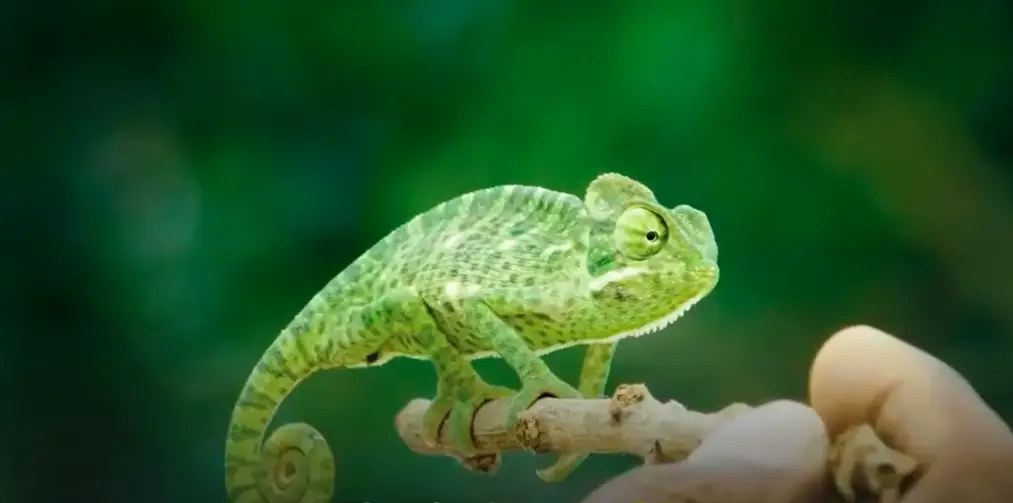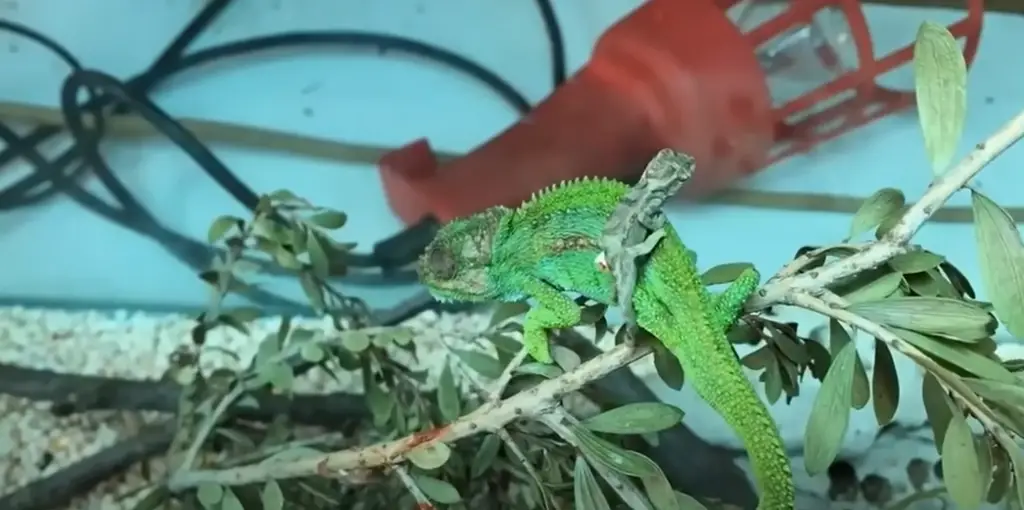Chameleons have always been shrouded in mystery. People often refer to them as “the masters of disguise.” But are they really lizards? In this article, we will take a close look at chameleons and find out the truth about their classification. We will also discuss their physical characteristics and how they adapt to their environment. So, are chameleons lizards? Keep reading to find out!
The 7 Key Differences Between Chameleon vs Lizard
The first thing to understand is that not all lizards are chameleons. While some species of lizards belong to the Chamaeleonidae family, there are many other families of non-chameleon lizards such as Iguanidae, Scincidae, and Gekkonidae. There are seven key differences between a chameleon and a lizard:
- Size – Chameleons tend to be smaller than most lizards, with some species growing only 3 inches in length while others can reach up to 2 feet long. Lizards vary greatly in size with some reaching lengths of five feet or more.
- Color – This is one area where chameleons really shine. Chameleons are popular for their quick color changes, helping them to either stand out or fit in depending on the situation. This is also how they communicate with other chameleons. In contrast, lizards usually don’t stand out as much because their colors are more subdued. They also can’t change colors the way chameleons do.
- Tail – Chameleons have prehensile tails which allow them to grasp objects firmly as they climb trees and branches. Most lizards have thinner, non-prehensile tails that cannot be used for gripping objects.
- Eyes – One of the most distinct features of a chameleon is its eyes which can move independently of each other in different directions. This scanning ability lets them find food and predators without having to move their head or body. Lizards have eyes that move together and are typically less sharp.
- Tongue – Chameleons have long, thin tongues which they use to snap up bugs from as far away as two feet. Most lizards have short, stubby tongues which are not as effective at capturing prey from a distance.
- Skin – Like other reptiles, chameleons have dry, scaly skin that helps them regulate their body temperature and protect them against predators. Lizards tend to be more colorful than chameleons with brighter hues and patterns on their skins.
- Behavior – Chameleons are usually solitary animals while lizards tend to live in groups or pairs. Chameleons are also well-known for their territorial behavior and will quickly become aggressive when another chameleon encroaches on their area.

Chameleon vs Lizard: Size
As stated earlier, chameleons tend to be much smaller than most lizards with some species growing only 3 inches in length. They also have the ability to rapidly change color in order to blend into their environment or communicate with other chameleons. This is one of the defining characteristics that sets them apart from lizards which typically have more muted tones and do not exhibit this same level of color changing ability. [1]
Chameleon vs Lizard: Location
Chameleons are found throughout the world in tropical and subtropical regions, with some species living in desert areas as well. Lizards can be found almost anywhere from deserts to forests and even in urban environments.
Chameleon vs Lizard: Tail
Another distinct feature of chameleons is their prehensile tail. This allows them to firmly grip objects as they climb trees and branches and can be used for balance while walking or running across uneven terrain. Most lizards, on the other hand, have thinner tails that lack this gripping ability. [2]
Chameleon vs Lizard: Eyes
Chameleons are famous for their large eyes that can move independently of each other in different directions. This allows them to scan a wide area for food and predators without moving their head or body. Lizards, however, have eyes that move together which is typically less effective when it comes to detecting movement. [3]
Chameleon vs Lizard: Tongue
Chameleons have highly extensible tongues which they use to capture insects from distances of up to two feet away. Their tongues are sticky and can be extended quickly to snatch their prey before it has a chance to escape. Most lizards, on the other hand, have short and stubby tongues that are not as effective at capturing prey from a distance. [4]
Chameleon vs Lizard: Reproduction
When it comes to reproduction, chameleons lay eggs while most lizards give birth young. Chameleon eggs usually take around two months to hatch but the exact time frame varies depending on the species and environmental conditions.

Chameleon vs Lizard: Lifespan
When it comes to their lifespan, chameleons typically live for around two to five years in the wild. This is much shorter than most lizards which can live for up to twenty or more years with proper care and nutrition.
FAQ
Is a chameleon a reptile or a lizard?
A chameleon is a type of lizard that belongs to the reptile family. [5]
Are chameleons lizards or geckos?
Chameleons are lizards that belong to the same family as geckos.
Are all lizards chameleons?
No, not all lizards are chameleons. While they have many similarities, chameleons have several distinct characteristics that set them apart from other lizards such as their prehensile tail and large eyes that can move independently of each other.
What is a better pet, a gecko or chameleon?
This depends on the individual and what they are looking for in a pet. Geckos make excellent first pets because of their smaller size, hardiness and docile nature. Chameleons, however, have many unique features that can make them very interesting to observe. Ultimately it is up to the owner’s preference.
Do chameleon bites hurt?
Yes, chameleon bites can hurt and cause significant swelling. It is important to handle them with care and always wash your hands after handling them in order to avoid getting bitten. [6]
Useful Video: Chameleon Changing Color
Conclusion
It’s tough to keep track of all the different animals out there, and sometimes we even get them mixed up. When it comes to lizards, one common mistake is thinking that chameleons are a type of lizard. But as it turns out, chameleons are actually in a category all their own! We hope this article helped clear things up for you next time you’re trying to impress your friends with your animal knowledge. And if you’re still curious about reptiles and amphibians, be sure to check out our other articles on the subject.
References:
- https://a-z-animals.com/blog/the-9-smallest-lizards-in-the-world-one-was-just-discovered
- https://www.sciencedirect.com/topics/veterinary-science-and-veterinary-medicine/prehensile-tail
- https://www.voanews.com/a/scientists-solve-mystery-of-chameleon-eyes/3026868.html
- https://asknature.org/strategy/chameleons-launch-ballistic-tongues/
- https://www.livescience.com/51061-chameleon.html
- https://reptilecraze.com/chameleon-bites-do-they-hurt-dangers-how-to-stop-it/






Leave a Review